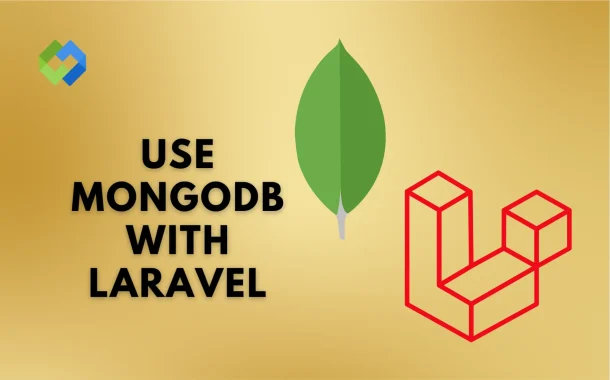Using MongoDB with Laravel makes data management easier. MongoDB is great for applications that require flexibility and fast data handling. Laravel’s built-in tools make it easy to connect and work with MongoDB. This combination allows you to take advantage of MongoDB’s speed while enjoying Laravel’s ease of use. MongoDB helps scale applications, while Laravel provides an elegant structure for development.
Table of Contents
Table of Contents
How to Install MongoDB on Your System
Download MongoDB
Visit the official MongoDB website and choose the correct version for your operating system (Windows, macOS, or Linux). Ensure you select the appropriate version, such as the Community Edition, for free use.
Install MongoDB
For Windows, run the downloaded installer and follow the prompts to complete the installation. On macOS, you can use Homebrew by running brew tap mongodb/brew and then brew install mongodb-community. On Linux, use your distribution’s package manager, such as sudo apt install mongodb for Ubuntu.
Verify Installation
After installation, open the terminal (or command prompt) and type mongo to launch the MongoDB shell. If everything is set up correctly, you’ll see a prompt that indicates MongoDB is running.
Start MongoDB
On Windows, MongoDB should start automatically after installation. For Linux or macOS, you may need to manually start MongoDB with mongod in the terminal. Make sure to keep the terminal open for MongoDB to stay active.
Setting Up Laravel Project for MongoDB
Install Laravel
First, you need to install Laravel on your system. You can create a new Laravel project by using Composer, which will set up all the necessary files for you to get started.
Install MongoDB Package for Laravel
To integrate MongoDB with Laravel, you need to install a package that enables Laravel to work with MongoDB. This package is specifically designed to allow seamless communication between Laravel and MongoDB.
Configure MongoDB Connection
After installing the MongoDB package, open the Laravel project’s configuration file to set the connection details. This includes setting the host, port, and database name that MongoDB will use.
Update Database Configuration
Once the connection details are set, you need to update Laravel’s database configuration settings to include MongoDB as one of the available database drivers. This ensures that Laravel knows how to interact with MongoDB for storing and retrieving data.
Integrating MongoDB with Laravel Framework
Integrating MongoDB with Laravel allows you to take advantage of MongoDB’s flexible data structure while using Laravel’s powerful features.
Install the MongoDB Laravel Package
To begin, you need to install a package like jenssegers/mongodb, which provides an easy way to use MongoDB in Laravel. This package will handle the connection between Laravel and MongoDB, allowing you to interact with MongoDB just like any other database in Laravel.
Configure MongoDB Connection
After installing the package, you need to update Laravel’s configuration files to establish a connection with MongoDB. This involves specifying the database credentials such as host, port, and database name. Make sure these settings are correct so Laravel can connect to MongoDB without any issues.
Using MongoDB in Laravel Models
Once the package is installed and configured, you can start using MongoDB in your Laravel models. Laravel’s Eloquent ORM is compatible with MongoDB, so you can perform CRUD operations just as you would with a traditional SQL database. This enables you to manage MongoDB collections directly from your Laravel application.
Creating MongoDB Models in Laravel
To work with MongoDB in Laravel, you need to create models that represent your MongoDB collections.
Create a Model
In Laravel, a model is used to interact with a specific database table or collection. For MongoDB, you will create models in the same way, but they will interact with collections instead of tables. When creating a model, make sure to extend the Jenssegers\Mongodb\Eloquent\Model class to enable MongoDB support.
Define MongoDB Collection
By default, Laravel assumes that your model corresponds to a table. For MongoDB, however, you need to specify the collection name. You can define the collection name within the model if it differs from the default naming convention used by Laravel.
Define the Schema
MongoDB is schema-less, but it’s still useful to define the structure of the data you plan to store in the collection. You can define fields and their types in your model, but MongoDB allows flexibility, meaning you don’t have to enforce strict rules.
Performing CRUD Operations with MongoDB in Laravel
With MongoDB integrated into your Laravel project, performing CRUD (Create, Read, Update, Delete) operations is simple and flexible.
Create Documents
To create new records in MongoDB, you can use the save() or create() methods provided by Eloquent. MongoDB allows you to insert documents with flexible and dynamic fields, so you don’t need to define a strict schema. You can also pass arrays or objects directly to create documents in the collection.
Read Data
To retrieve data from MongoDB, use methods such as find(), where(), or all(). These methods allow you to fetch documents based on conditions like field values or relationships. For example, find() retrieves a document by its unique identifier, while where() helps filter records based on specific criteria.
Update Documents
Updating documents in MongoDB is straightforward with the update() or save() methods. MongoDB supports partial updates, so you can modify only specific fields in a document without rewriting the entire document. You can use conditions to target the documents that need to be updated.
Delete Documents
Deleting documents is easy with the delete() method. You can delete a single document by specifying its ID or delete multiple documents by using conditions to match the records. MongoDB also supports soft deletes, where documents are flagged as deleted but not permanently removed, which can be useful in certain cases.
Testing MongoDB Integration in Laravel
After setting up MongoDB in your Laravel project, it’s essential to test the integration to ensure that everything is working correctly.
- Check Database Connection: Start by checking if Laravel can successfully connect to MongoDB. You can do this by running a simple query, like fetching data from a MongoDB collection, to verify the connection. If the query runs without errors, the connection is successful.
- Test CRUD Operations: Next, test basic CRUD operations like creating, reading, updating, and deleting documents. For instance, create a test record and then retrieve it to check if data is being stored and retrieved correctly. Update and delete operations can also be tested to ensure they work as expected.
- Use Artisan Commands for Testing: You can use Laravel’s Artisan commands to run tests. These can help verify that the MongoDB connection and models are functioning properly. Running a basic php artisan migrate command (even if not directly used for MongoDB) can help identify connection issues.
- Check Logs for Errors: If there are any issues with the integration, Laravel’s logs in the storage/logs folder will provide detailed error messages. These can help identify connection issues, query problems, or other integration errors.
Conclusion
Using MongoDB with Laravel is a great way to take advantage of MongoDB’s flexibility while leveraging Laravel’s powerful features. The integration process is straightforward and offers easy access to MongoDB’s dynamic data storage capabilities.
With the right setup, you can easily perform CRUD operations and manage your MongoDB collections in Laravel. Testing the connection and ensuring that everything works correctly is key to smooth operation.














